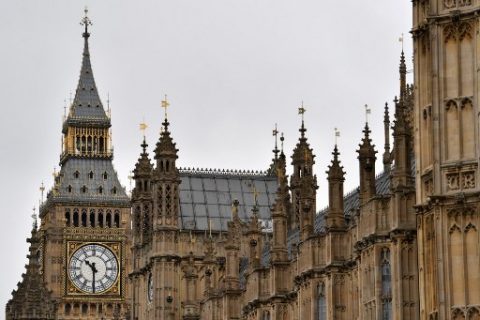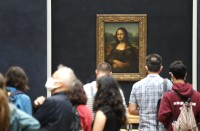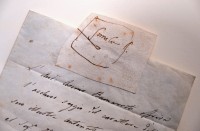
LONDON, United Kingdom (AFP) — A cherished British icon, Big Ben, is falling silent from Monday for repairs expected to last four years.
Here are some facts and figures for Big Ben and the other bells of the Houses of Parliament in the world’s most photographed clock tower.
Name
Many simply refer to the entire tower as Big Ben. But its proper name is the Elizabeth Tower, the clock is the Great Clock and Big Ben is the nickname of the Great Bell, which chimes the hour.
The origin of the Big Ben name is uncertain. The most likely theory is that it is derived Sir Benjamin Hall, who oversaw the installation of the bell and whose name is inscribed on it.
Another theory is that it was named after heavyweight boxing champion Ben Caunt, who was nicknamed Big Ben.
Clock and bells
Big Ben weighs 13.7 tons, is 2.2 meters (over seven feet) high with a diameter of 2.7 meters. Its hammer weighs 200 kilos (440 pounds). Its musical note when struck is an E and it is 118 decibels loud.
There are four other much smaller bells that are used to ring the quarter-hour chimes. They sound higher notes of G sharp, F sharp, E and B.
Each of the four dials has a diameter of seven meters. The hour figures are 60 centimeters long.
The minute hands are made of copper and are 4.2 meters long and weigh 100 kilos each.
The hour hands are made of gun metal and are 2.7 meters long and weigh 300 kilos.
The tower
The tower is 96 meters tall with a 12-meter square width. There are 11 floors, with 334 steps to the belfry and 399 to the lantern above.
The bell was winched into place in October 1858.
The new clock tower was completed in 1859 and the Great Clock started on May 31, with Big Ben first struck on July 11.
However, the Great Bell cracked in September 1859 and fell silent for four years.
In 1863 a solution was found: rotating the bell, a lighter hammer, and a small square cut into the bell to prevent the crack from spreading.
The chimes were first broadcast in Britain on New Year’s Eve in 1923, and to the empire in 1932.
The Clock Tower was renamed in 2012 in honor of Queen Elizabeth II’s diamond jubilee.
When the bells stopped
Stoppages are rare but not unusual.
In April 2013, they were silenced for the funeral of Margaret Thatcher, Britain’s first female prime minister.
They were halted for seven weeks in 2007 for maintenance and in October 2005 to allow inspection of the brake shaft.
In 1979, a mechanical failure caused damage that silenced the bells for nine months.
The bells stopped in 1956 for six months and for two months in 1934.
Odd facts
The clock pendulum is regulated by adding or removing old one penny coins. Adding one penny causes the clock to gain two-fifths of a second in 24 hours.
Someone standing at the foot of the tower listening to the bongs on an FM radio will hear them a split-second earlier.
The Ayrton Light, a lantern in the tower above the clock faces, shows when parliament is sitting.
The unofficial big_ben_clock Twitter account has 484,000 followers. It tweets the number of bongs on the hour, every hour. At one o’clock: “BONG”. At two o’clock: “BONG BONG” etc.
The maintenance work
Expected to take four years, at a cost of £29 million ($37.7 million, 31.9 million euros).
The Great Clock will be dismantled, with each cog examined and restored — a process expected to take two years.
Driven by an electric motor, one working clock face will remain visible throughout the conservation process.
The four dials will be cleaned, the glass repaired, the cast iron framework renewed, and the hands removed and refurbished.
© Agence France-Presse








